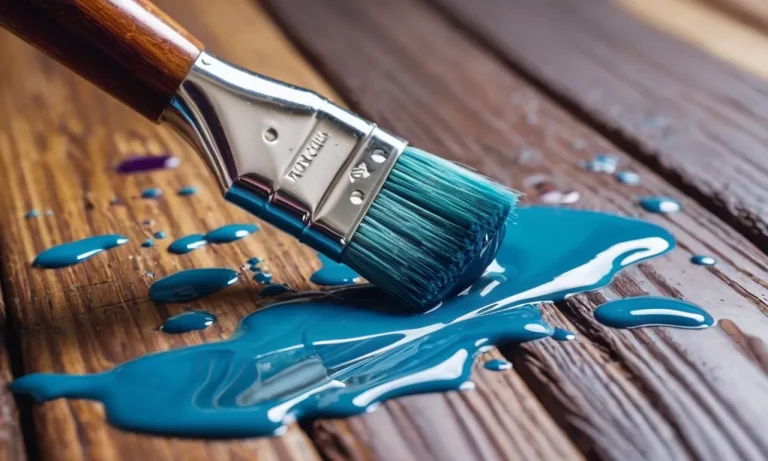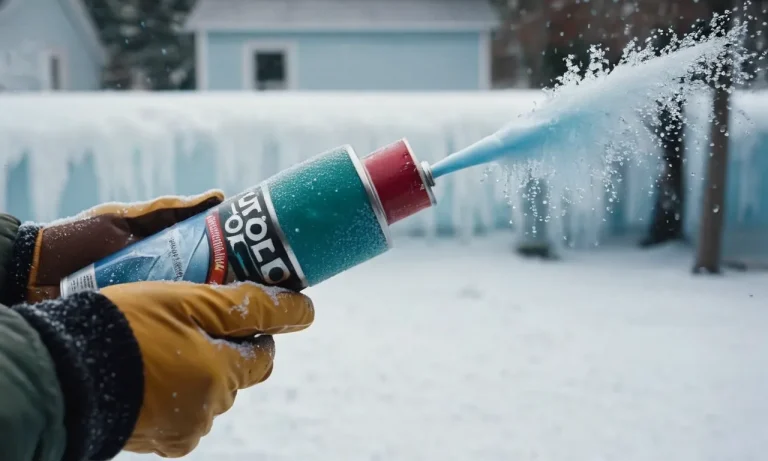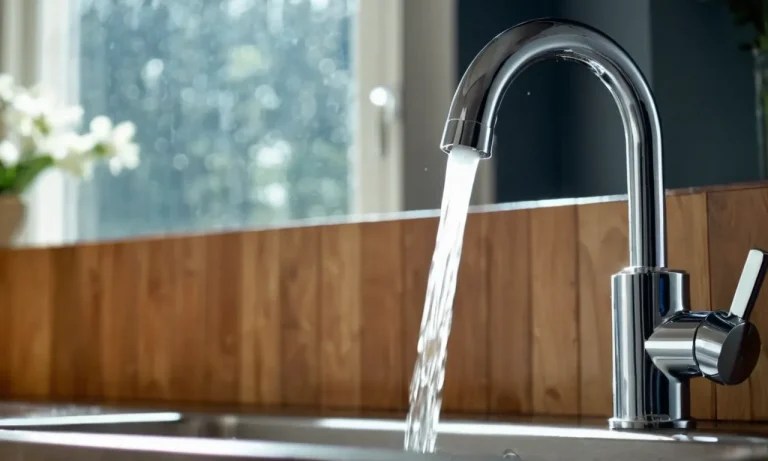How To Fix A Swollen Door: A Complete Step-By-Step Guide
Do you have a door in your home that is difficult to open or close? A swollen door is a common problem caused by moisture or humidity. If left unchecked, a swollen door can become stuck shut or damaged. The good news is that fixing a swollen door is often an easy DIY project.
Here is a quick 3-step answer on how to fix a swollen door: 1. Identify and address the source of moisture causing the swelling. 2. Use a hair dryer or heat gun to dry out the door. 3. Lightly sand swollen areas, and lubricate hinges.
In this comprehensive guide, we will cover common causes of swollen doors and show you step-by-step instructions for effectively fixing a swollen door.
What Causes a Door to Become Swollen?
A swollen door can be a frustrating problem, making it difficult to open or close properly. Understanding the causes of a swollen door can help you prevent it from happening or take the necessary steps to fix it. Here are some common reasons why doors become swollen:
Excess Moisture
One of the main culprits behind a swollen door is excess moisture. When a door is exposed to high levels of moisture, such as rainwater or humidity, it can absorb the moisture and expand. This can lead to the door becoming misaligned and difficult to open or close.
Excess moisture can also cause the door to warp or develop mold and mildew.
Temperature and Humidity Changes
Temperature and humidity changes can also cause a door to become swollen. When wood is exposed to fluctuations in temperature and humidity, it can expand and contract, leading to swelling. For example, during hot and humid summer months, the increased moisture in the air can cause a wooden door to swell.
Similarly, during dry winter months, when the air is drier, the wood can shrink, causing the door to become misaligned.
Lack of Air Circulation
A lack of air circulation can contribute to a door becoming swollen. When a door is installed in an area with poor ventilation or in a confined space, it may not have adequate airflow. This can trap moisture around the door and promote swelling.
It’s important to ensure that there is proper ventilation around your doors to prevent this issue.
Water Damage
Water damage is another common cause of a swollen door. If a door is exposed to excessive water, such as from a leak or flooding, it can absorb the water and swell. This can weaken the structure of the door and lead to further damage if not addressed promptly.
It’s essential to address any water damage issues and fix leaks to prevent future swelling of the door.
By understanding the causes of a swollen door, you can take the necessary steps to prevent it from happening or address the issue if it does occur. Regular maintenance, such as sealing and painting your doors, can help protect them from excess moisture and temperature changes.
Additionally, ensuring proper ventilation and addressing water damage promptly can go a long way in preventing door swelling.
How to Fix a Swollen Wood Door
Dealing with a swollen wood door can be frustrating, but with the right steps, you can fix the problem and restore your door to its original condition. Follow this complete step-by-step guide to learn how to fix a swollen wood door.
Step 1: Identify and Address the Source of Moisture
The first step in fixing a swollen wood door is to identify and address the source of moisture. Excess moisture is often the main cause of door swelling. Check for any leaks or sources of moisture near the door, such as leaking pipes or a humid environment.
Fixing the source of moisture is crucial to prevent future swelling.
Step 2: Use Heat to Dry Out the Door
Once you have addressed the source of moisture, the next step is to dry out the swollen door. One effective method is to use heat. You can use a hairdryer or a heat gun to apply heat to the swollen areas of the door. Be sure to keep the heat source moving to avoid damaging the wood.
The heat will help to evaporate the moisture and reduce the swelling.
Step 3: Sand Down Swollen Areas
After the door has dried out, you may still notice some areas that are swollen. In this step, you will need to sand down these swollen areas. Use a sandpaper or a sanding block to gently sand the swollen parts of the door.
Start with a coarse grit sandpaper and gradually move to a finer grit for a smooth finish. Sanding will help to remove any excess material and restore the door’s original shape.
Step 4: Lubricate Hinges
Swollen doors can put extra strain on the hinges, making them difficult to open and close. To ensure smooth operation, it is important to lubricate the hinges. Apply a lubricant, such as WD-40, to the hinge pins and moving parts.
This will help to reduce friction and make it easier to open and close the door.
Step 5: Adjust Door Fit and Rehang If Necessary
If the door is still not fitting properly after addressing the swelling, you may need to adjust the door fit. This can be done by adjusting the hinges or shimming the door frame. If necessary, remove the door from its hinges and rehang it once the adjustments have been made.
This step may require some trial and error to achieve the perfect fit.
Step 6: Refinish the Door
Once you have fixed the swelling and adjusted the door fit, the final step is to refinish the door. Sand down the entire surface of the door to remove any remaining imperfections and then apply a fresh coat of paint or varnish.
This will not only improve the appearance of the door but also provide added protection against moisture and swelling in the future.
By following these step-by-step instructions, you can effectively fix a swollen wood door and restore its functionality and appearance. Remember, prevention is key, so be sure to address any sources of moisture and take necessary measures to protect your door from future swelling.
How to Fix a Swollen Metal or Fiberglass Door
Step 1: Identify and Address the Moisture Source
One of the main causes of a swollen metal or fiberglass door is moisture. Before you can fix the problem, you need to identify and address the source of the moisture. This could be a leaky pipe, a faulty gutter system, or even excessive humidity in the area.
Once you have identified the source, take the necessary steps to fix it. This will help prevent future swelling and damage to your door.
Step 2: Use Heat to Dry Out the Door
To fix a swollen metal or fiberglass door, you can use heat to dry it out. This can be done by using a hairdryer or a heat gun on a low setting. Start by heating the affected area of the door, moving the heat source back and forth to evenly distribute the heat.
Be careful not to apply too much heat, as this can damage the door. As you heat the door, you should start to see it gradually return to its normal size.
Step 3: Lubricate Hinges
Swollen doors can sometimes become stuck or difficult to open and close properly. To alleviate this issue, it’s important to lubricate the hinges. This can be done by applying a lubricant such as WD-40 or a silicone-based spray to the hinges.
Make sure to thoroughly coat the hinges and allow the lubricant to penetrate the moving parts. This will help the door operate smoothly and prevent further damage.
Step 4: Adjust Door Fit and Rehang If Necessary
If the door is still not fitting properly after addressing the moisture source and using heat to dry it out, you may need to adjust the door fit. This can be done by loosening the screws on the hinges and slightly shifting the door up or down, or side to side, until it fits properly in the frame.
Once you have adjusted the fit, tighten the screws back in place. If necessary, you may also need to rehang the door to ensure it is properly aligned and functioning correctly.
How to Prevent Doors from Becoming Swollen
Preventing doors from becoming swollen is essential to maintain their functionality and appearance. Here are some effective tips to help you prevent this common issue:
Seal Gaps and Cracks to Prevent Moisture Intrusion
One of the main causes of door swelling is moisture intrusion. To prevent this, it is important to seal any gaps or cracks around the door frame. Use weatherstripping or caulk to seal the openings and prevent moisture from seeping in.
This will help maintain the structural integrity of the door and prevent it from swelling.
Install Vents or Fans to Improve Air Circulation
Poor air circulation can contribute to moisture buildup, leading to door swelling. Installing vents or fans in areas with limited airflow can help improve ventilation and reduce the chances of doors becoming swollen.
By promoting better air circulation, you can minimize moisture accumulation and prevent door swelling.
Use a Dehumidifier
In areas with high humidity levels, using a dehumidifier can be an effective way to prevent door swelling. A dehumidifier helps remove excess moisture from the air, reducing the likelihood of doors absorbing moisture and swelling.
Regularly using a dehumidifier in humid environments can help maintain the integrity of your doors.
Apply Protective Finishes
Applying protective finishes, such as paint or varnish, can help seal the wood and protect it from moisture. These finishes create a barrier that prevents water from penetrating the door, reducing the risk of swelling.
Make sure to choose a high-quality finish that is specifically designed for exterior doors for optimal protection.
Maintain Proper Home Humidity Levels
Keeping your home’s humidity levels within the recommended range can help prevent door swelling. The ideal humidity range for a home is typically between 40% and 50%. Using a hygrometer, you can monitor the humidity levels in your home and take appropriate measures, such as using a humidifier or dehumidifier, to maintain them within the optimal range.
Inspect Doors Regularly
Regularly inspecting your doors is crucial for identifying any signs of swelling or moisture damage early on. Check for any changes in the door’s appearance, such as warping, bulging, or sticking. Additionally, pay attention to any soft spots or discoloration, as these may indicate water damage.
By catching and addressing these issues early, you can prevent further damage and potential door swelling.
By following these preventative measures, you can significantly reduce the chances of your doors becoming swollen. Remember to regularly maintain and inspect your doors to ensure their longevity and functionality.
Conclusion
A swollen door can often be fixed with some simple DIY techniques like using a heat gun, sanding, lubricating hinges, and adjusting the door fit. Identifying and addressing excess moisture is key to stopping the swelling and preventing future issues.
With proper maintenance and moisture control, you can stop doors from becoming swollen and swollen doors from getting worse. We hope this guide gives you everything you need to permanently fix a swollen door.







